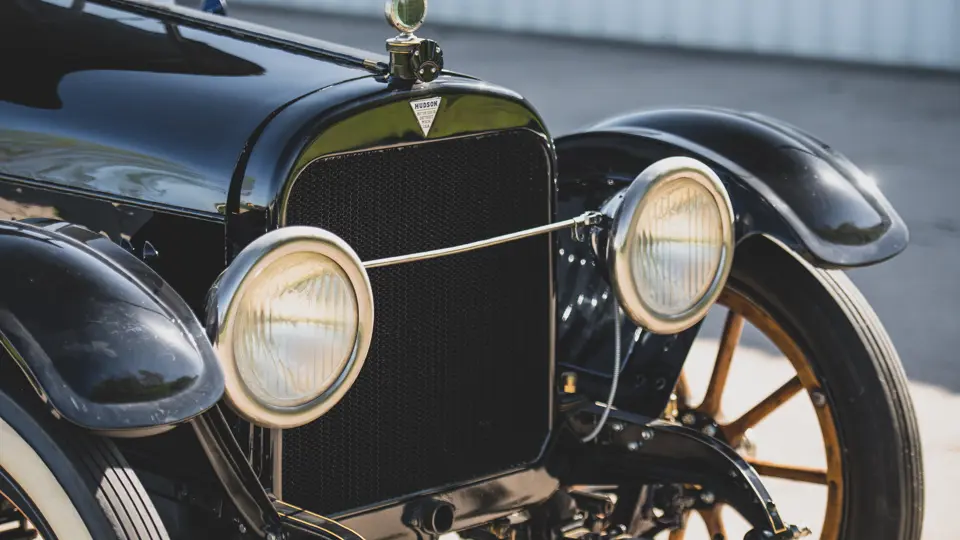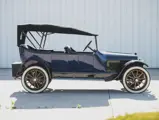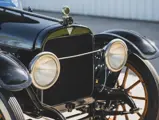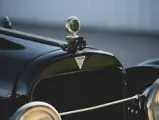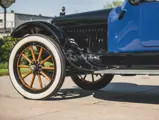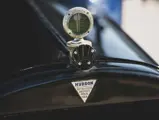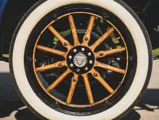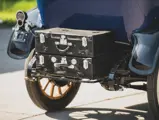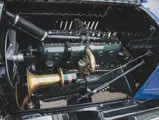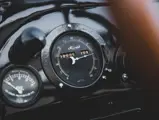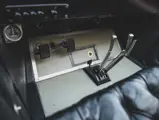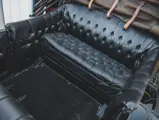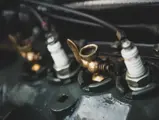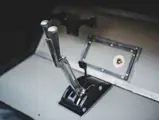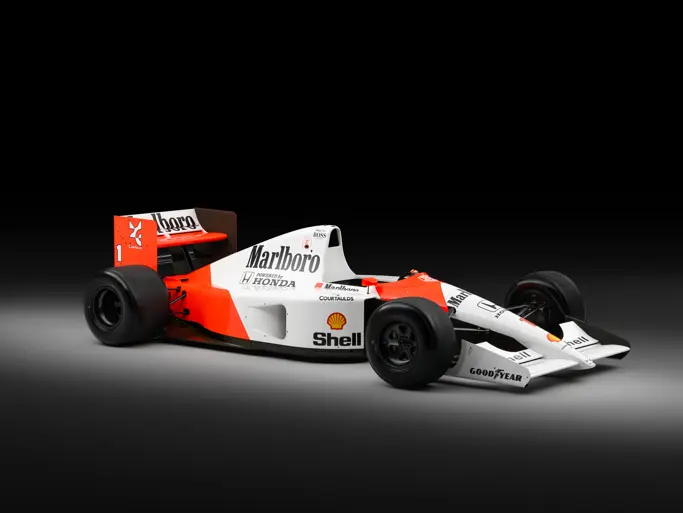The Hudson car was named for the man who bankrolled the company, Detroit department store magnate Joseph L. Hudson. His niece had married Roscoe Jackson, who worked for Oldsmobile and was teaming with fellow Olds alumni Howard Coffin, Roy Chapin, and George Dunham. Their first car, the Hudson Model 20, introduced in June 1909, was based on a model that Coffin had worked up during his prior stint at Thomas-Detroit. An open roadster on a 100-inch wheelbase, it had a 199-cubic-inch four-cylinder engine from Continental and a three-speed sliding-gear transmission. Companion models on a 110-inch wheelbase were offered as a roadster with doors and a five-passenger touring.
In the next four years, three new models followed, the most ambitious of which was the six-cylinder Model Six-54 of 1913. Six different body styles were offered on a 127-inch wheelbase. The 54 continued in successive years, but the bread-and-butter car for 1914 was the new Six-40, on a smaller, 123-inch chassis and powered by a 288-cubic-inch, 40 hp six. Four-cylinder engines were discontinued altogether.
The Merrick Auto Museum purchased this Hudson Six-40 phaeton from the Kruse Antique Transportation Collection in June 2004. Very imposing in blue with black fenders, it has black diamond-pattern buttoned leather upholstery. The black canvas-lined top is new, and there are side curtains, a rear-seat blanket bar, and folding jump seats. Equipped with Delco electric starting and lighting, it has a three-speed sliding-gear transmission with central control, left-hand drive, and a natural wood-finished steering wheel. Dashboard instrumentation includes a Stewart 60 mph speedometer and an oil-flow gauge for the splash lubrication system. It rides on 34 × 4 white sidewall tires.
By the time this 1915 Six-40 was built, Hudson Motor Car Company was advertising itself as the “World’s Largest Manufacturer of Six-Cylinder Cars.”

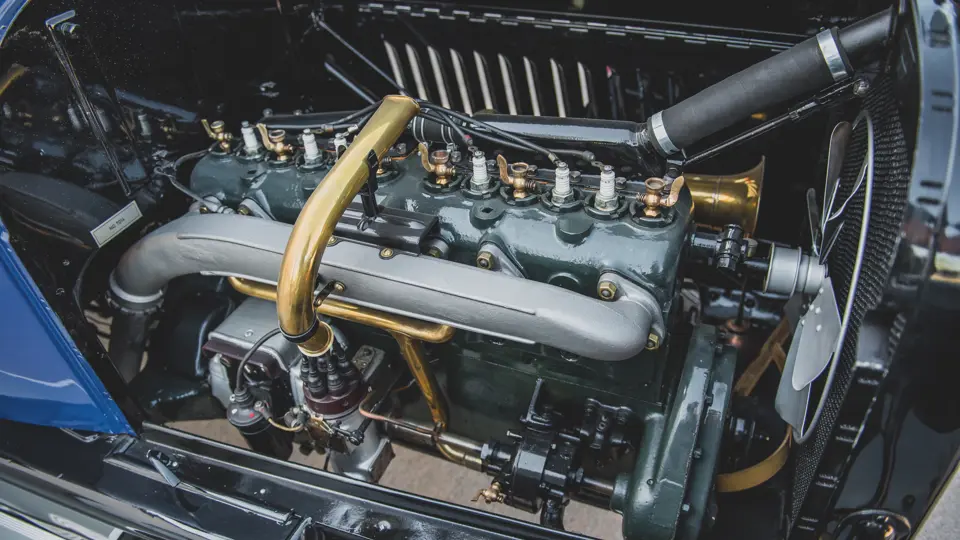
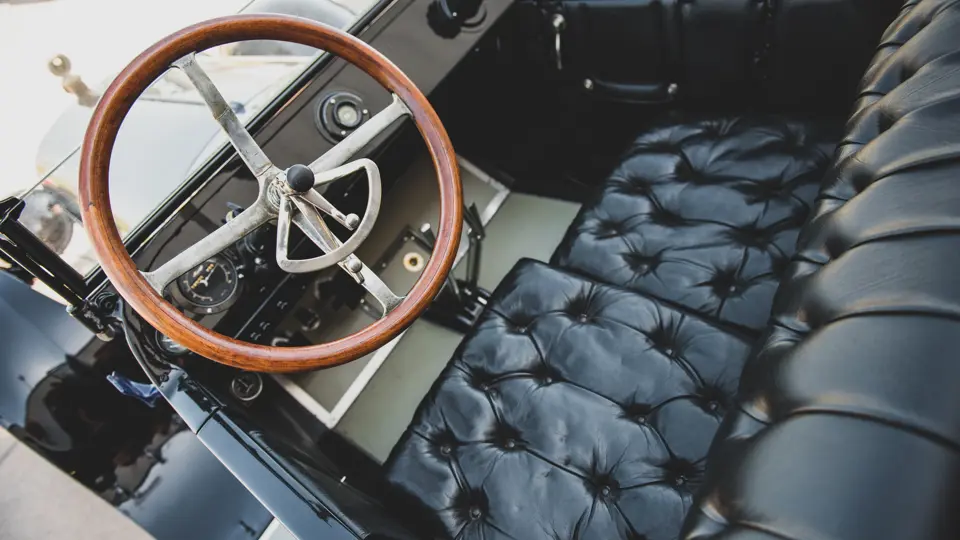

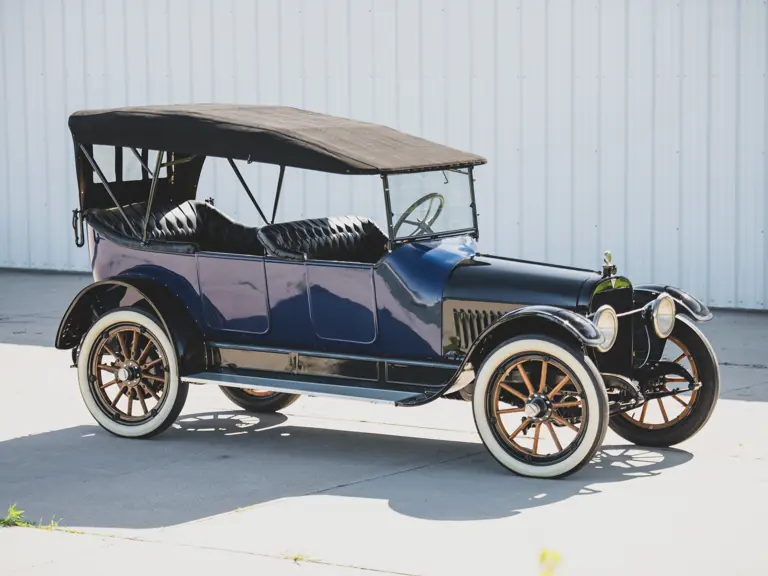
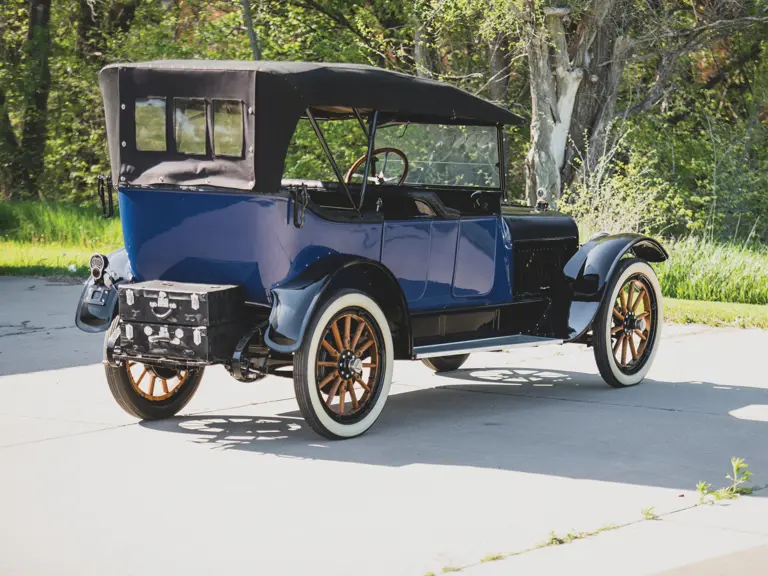
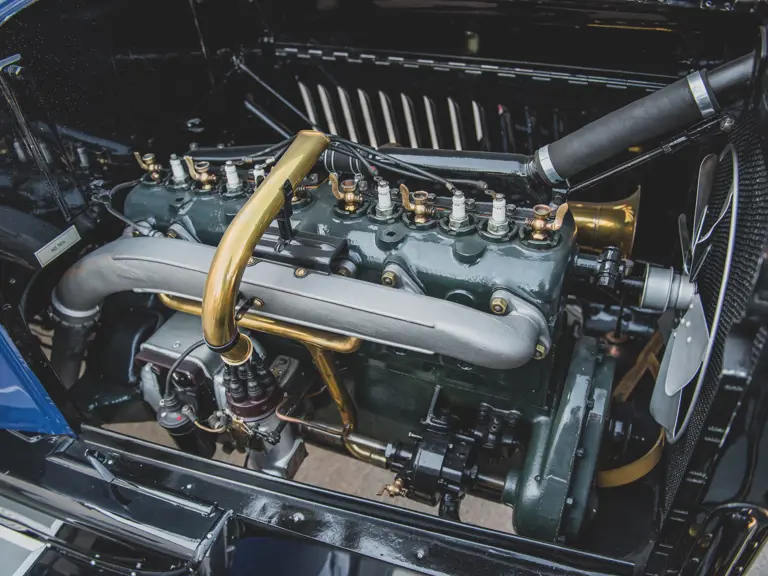
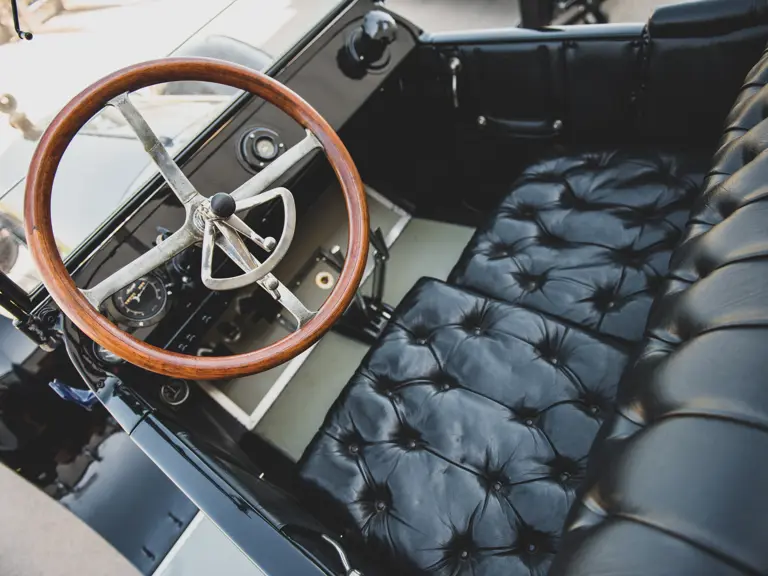
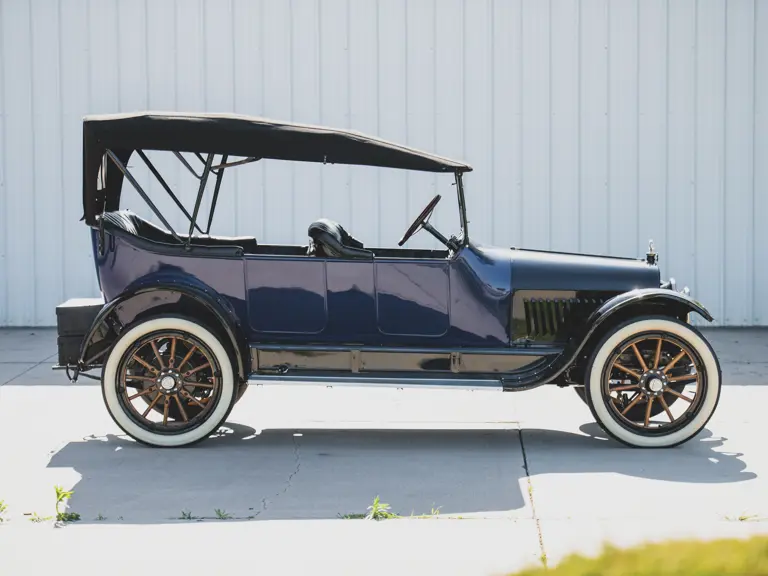
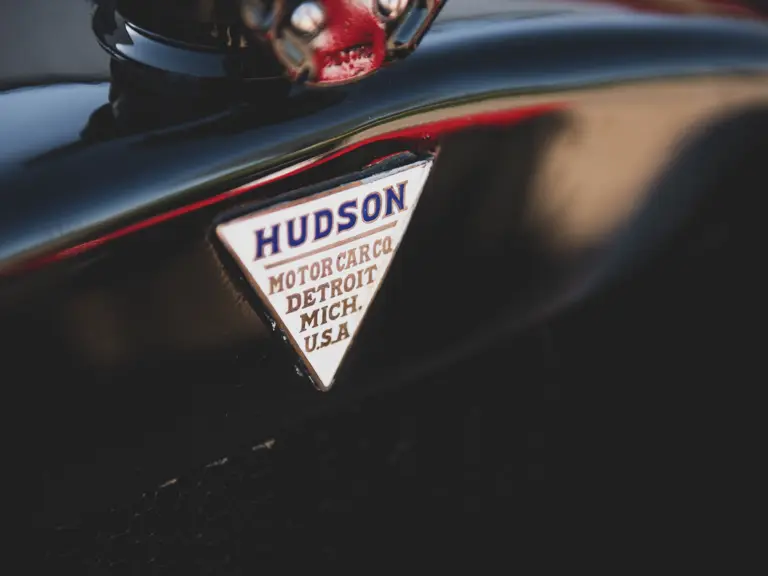
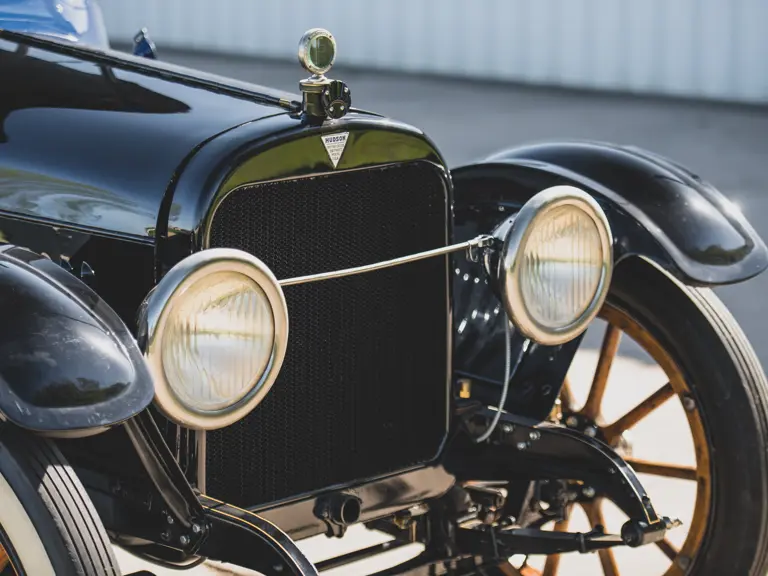


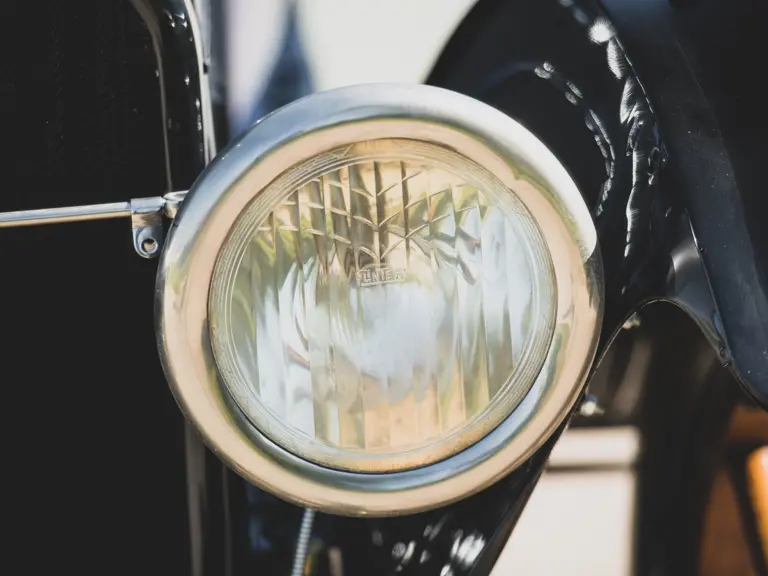

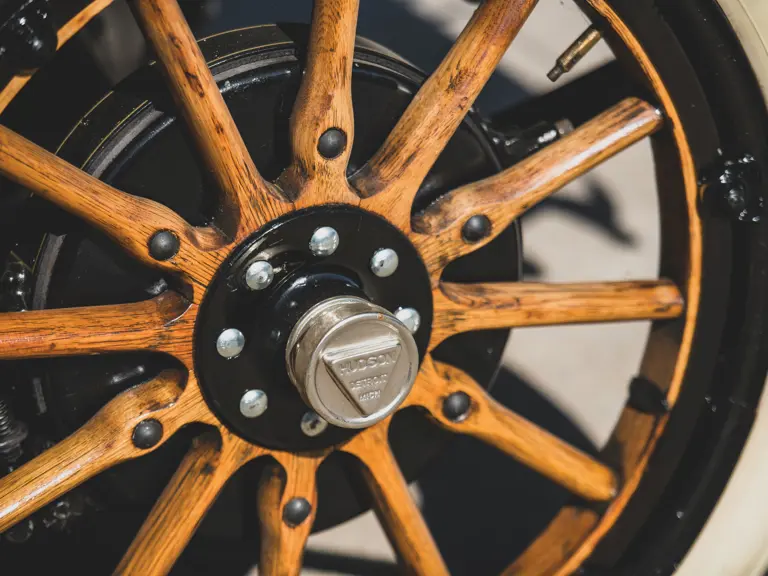
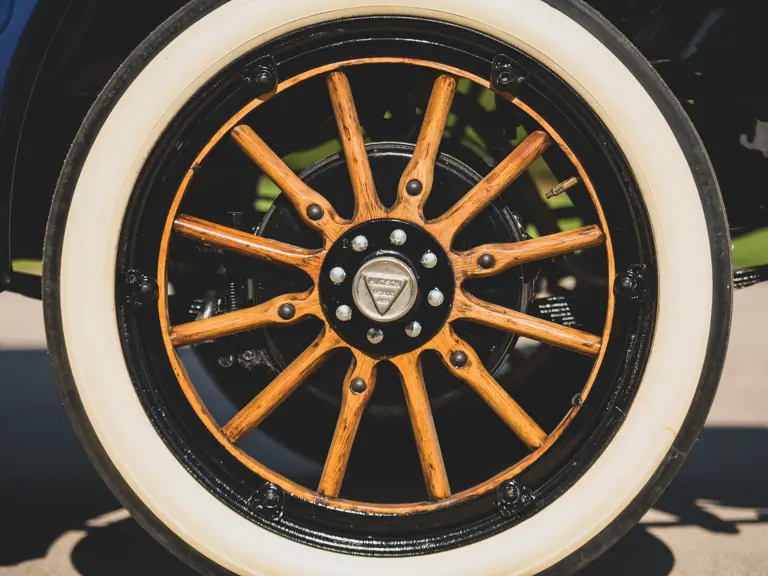

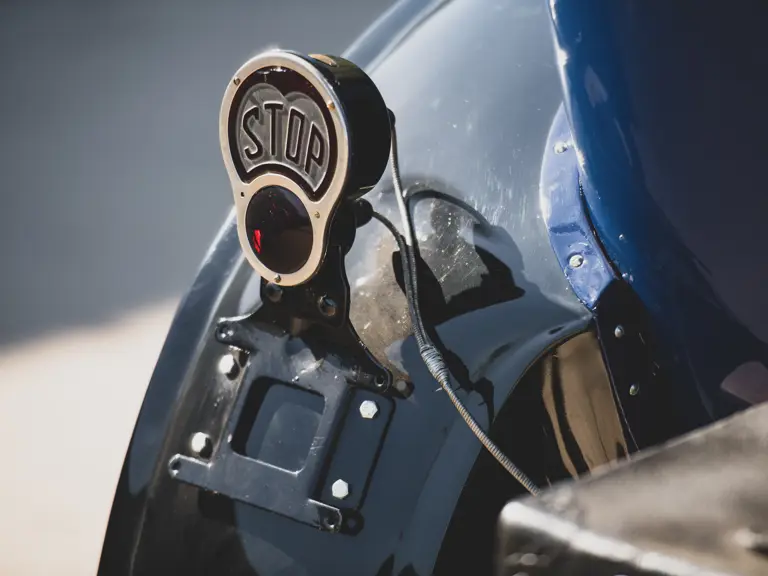
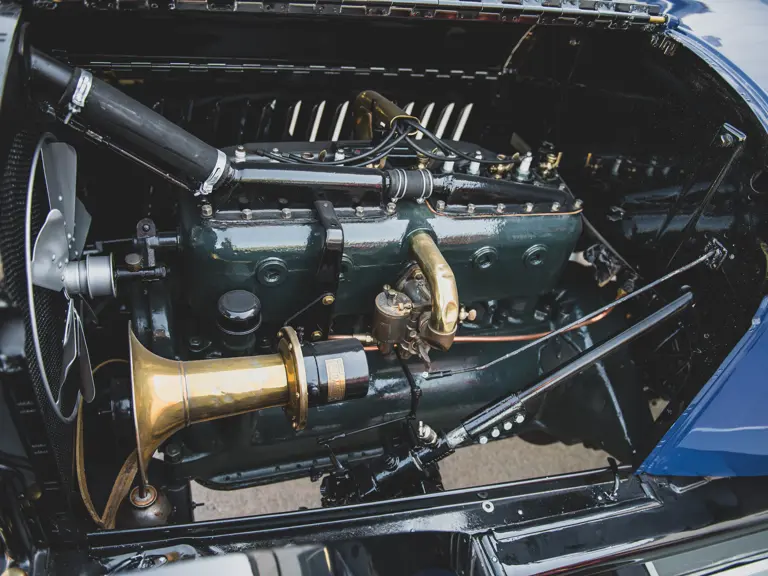
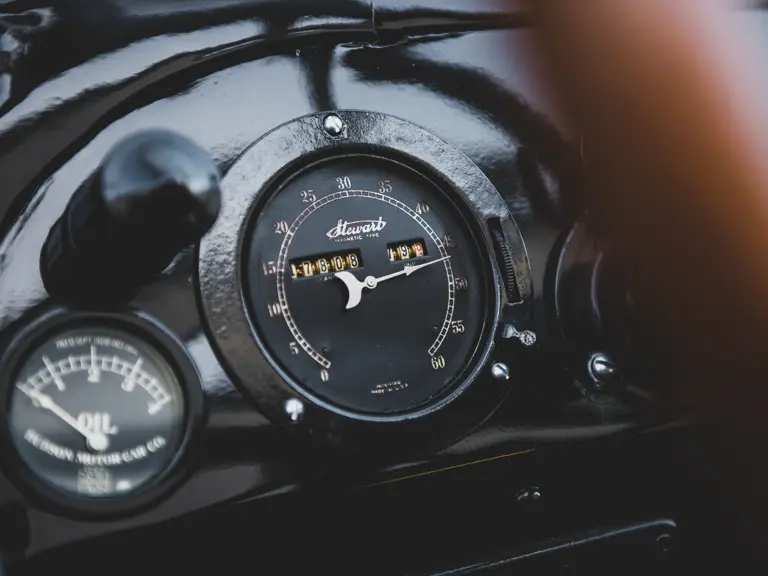
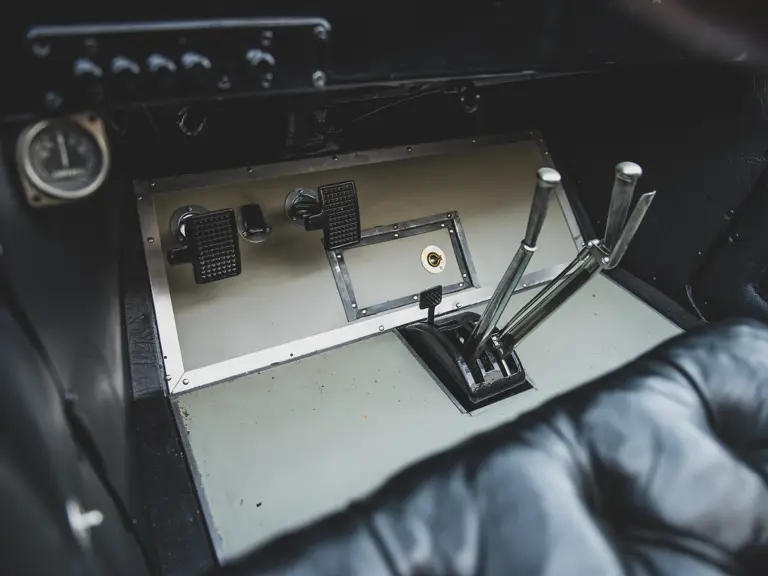

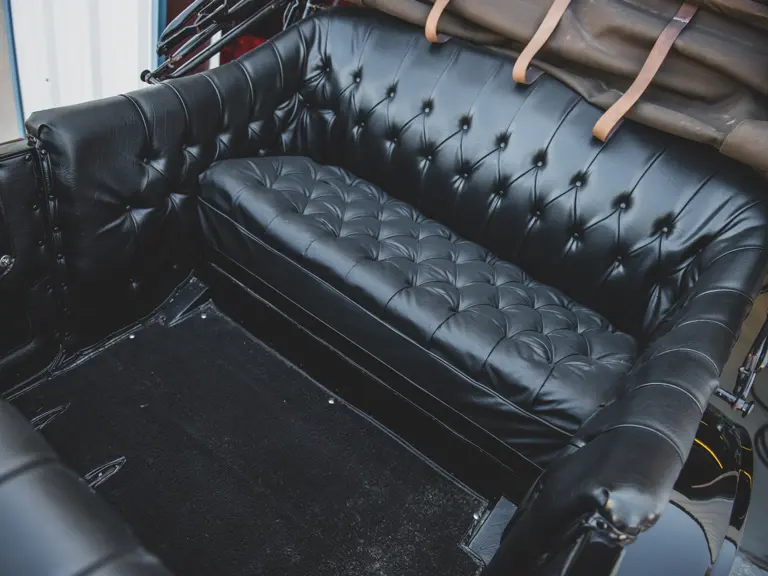
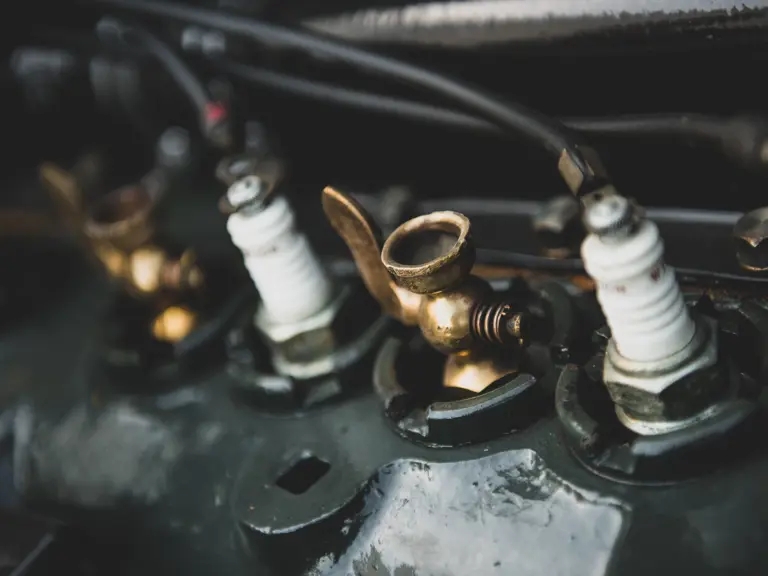
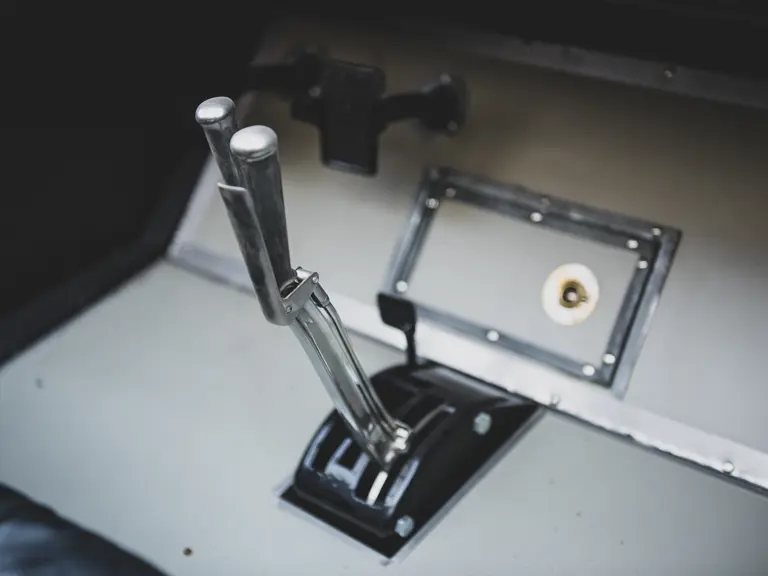
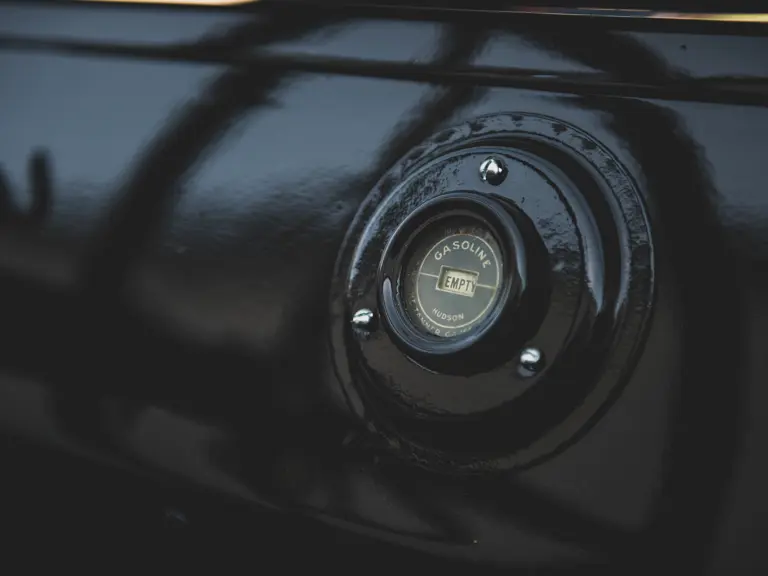
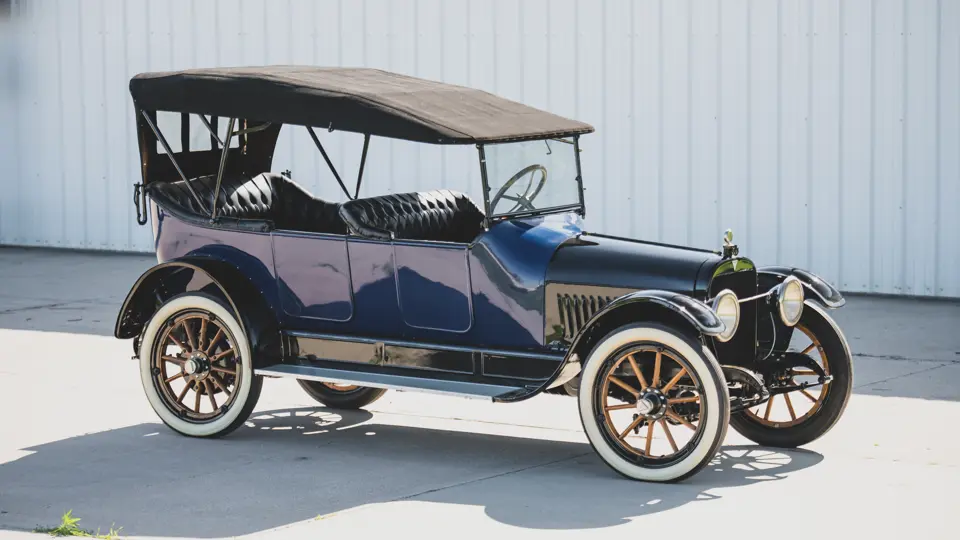
 | Hershey, Pennsylvania
| Hershey, Pennsylvania


